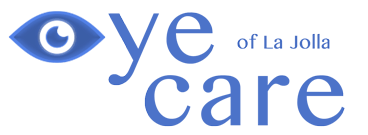Posted by: Eye Care of La Jolla in Dry Eye on July 19, 2024
Many people, especially those over 50, suffer from the often uncomfortable condition known as dry eye syndrome. Because of hormonal changes, women are more likely to suffer from dry eyes, especially after menopause. Prolonged use of screens, contact lenses, and certain medical disorders including diabetes and arthritis are some causes that might cause dry eyes.
We at Eye Care of La Jolla are aware of the inconvenience and discomfort that dry eyes can cause. To help you in getting better and maintaining the health of your eyes, we provide a variety of efficient treatments.

Dry Eye Treatment Options
Dry eye syndrome, characterized by insufficient tear production or poor tear quality, can significantly impact quality of life. Treatment options vary based on severity and underlying causes. Here’s a detailed overview of the main treatments and when they are used:
1. Artificial Tears and Lubricants
- Types: Over-the-counter (OTC) drops, gels, and ointments.
- Purpose: To supplement natural tears, providing temporary relief from dryness and irritation.
- Frequency: Can be used multiple times a day, with preservative-free options available for frequent use.
2. Prescription Medications
- Cyclosporine (Restasis):
- When Used: For chronic dry eye with an inflammatory component.
- Purpose: Increases tear production by reducing inflammation in the tear glands.
- Lifitegrast (Xiidra):
- When Used: Similar indications as cyclosporine, particularly for moderate to severe dry eye.
- Purpose: Reduces inflammation and increases tear production.
3. Anti-inflammatory Eye Drops
- Corticosteroid Drops: (Eysuvis)
- When Used: Short-term use for acute inflammation.
- Purpose: Quickly reduce inflammation to alleviate severe symptoms.
4. Punctal Plugs
- When Used: For moderate to severe dry eye unresponsive to artificial tears and medications.
- Purpose: Small plugs are inserted into tear ducts to reduce tear drainage, thereby keeping the eye surface moist longer.
- Types: Temporary (dissolvable) or permanent (silicone).
5. Meibomian Gland Therapy:
- When Used: For dry eye associated with blepharitis or meibomian gland dysfunction (MGD).
- Purpose: Warm compresses help unclog oil glands, and lid scrubs maintain eyelid hygiene, improving tear film stability. Devices like Lipiflow® help unblock and improve the function of meibomian glands.
6. Omega-3 Fatty Acid Supplements (Over the Counter)
- When Used: For mild to moderate dry eye, especially with inflammation.
- Purpose: Dietary supplements to improve the quality of the tear film by reducing inflammation.
7. Lifestyle and Environmental Modifications
- When Used: For all severities of dry eye.
- Purpose: Minimizing exposure to dry or windy conditions, using humidifiers, taking breaks during screen time, and staying hydrated can significantly reduce symptoms.
Effective management of dry eye syndrome requires a tailored approach based on the specific needs and severity of each patient. Initial treatment often starts with less invasive methods like artificial tears and lifestyle changes. For more severe or persistent cases, prescription medications, punctal plugs, and even surgical options might be necessary. Collaboration with an Eye Care of La Jolla dry eye specialist ensures optimal treatment and monitoring, providing relief and improving the quality of life for those affected by dry eye syndrome.
David Michelson, M.D. is one of our experienced ophthalmologists dedicated to provide personalized dry eye syndrome treatment for each patient.
If you’re struggling with dry, irritated eyes, don’t wait any longer to seek help. Call us today at (858) 457-3050 to schedule your Dry Eye Evaluation.








